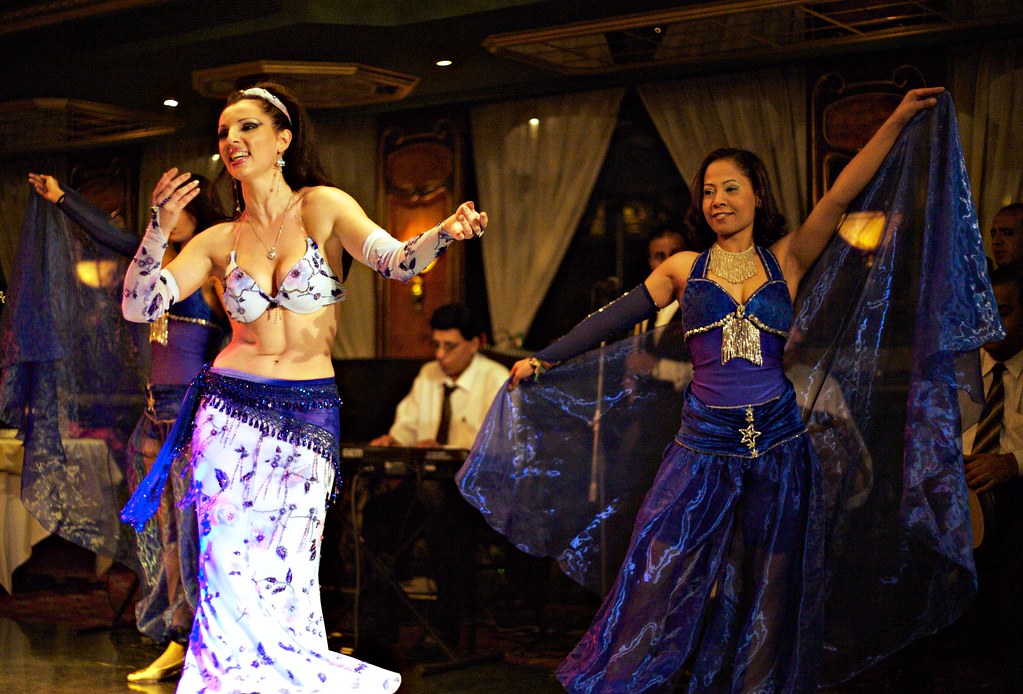
Belly Dancing History
Belly dance is mainly a torso-driven movement, with a focus on hip joints. Like other western dance styles, the emphasis of the dance is on the separation of the torso muscles, instead of the moving of the limbs across space. People who believe that belly dancing began as a method for priestesses to worship a goddess like the origin narrative to send a message of female empowerment. Women who think that belly dance originated as a tool to prepare a woman’s body for childbirth want the birth story to celebrate motherhood. Belly dancing history crosses numerous social limits, getting its beginning in the Center East and Africa, and proceeding onward to develop in western societies as both a type of social move and colorful diversion. In the 21st century, the class has increased significant ubiquity all around the globe.
Early Belly Dancing History
The expression “Belly Dance” is a westernized name that initially alluded to customary Center Eastern moving. The most punctual types of Belly Dance were the Egyptian ghazi move during the nineteenth century, and Raqs Sharqi, an Arabic move of the twentieth century. In spite of Egypt’s area in Africa and commitments from different countries, for example, France, Turkey and the US, the term Belly Dance is normally utilized today to incorporate every single customary move of the Center Eastern locale, including those not topographically arranged there.
Inceptions in Egypt
The main paunch artists were a gathering of voyaging artists known as the ghawazee. These ladies were viewed as rovers in Egypt in the eighteenth century, and were exiled from Cairo during the 1830s, however proceeded to act in Upper Egypt and later in the Center East and Europe. Belly Dancing was, during this timeframe, regularly known as “Oriental” moving, and the ladies were put on the map in Europe by creators and painters fascinated by the extraordinary idea of the craftsmanship. From the ghawazee troupe, the raqs sharqi classification of Belly Dancing started to create. More urban than the most flawless move structures in prior Belly Dancing history, it immediately got mainstream and submitted general direction to the ghawazee as well as different society move styles, artful dance, Latin move, and even American walking groups. Belly Dancing picked up notoriety in the US during the 1960s and 1970s during when more ladies were turning out to be free spirits. At this point, the move had a serious exotic notoriety, and western ladies endeavored to reexamine it as a lady centered move that was acted related to female festivals, for example, labor and new-age Goddess venerate.
Movement through the Ages
While Belly Dancing is exceptionally gaudy in style and costuming, the essential move requires the restrained expertise of disengagements. Consequently, those with experience moving jazz or artful dance will do well with fundamental Belly Dance procedure. The center muscles of the artist’s body execute every development, rather than the utilization of outside muscles alone. Most of developments originate from the hip and pelvic locale; be that as it may, disconnections of the shoulders and chest are likewise imperative to a liquid looking presentation. There are numerous means found in the different styles of Belly Dancing played out everywhere throughout the world, however the exemplary advances that return all through a few periods throughout the entire existence of Belly Dancing are: Shimmy – vibrating hips utilizing the muscles of the lower back. You may shimmy front to back or side to side to make this vibration, and once in a while it is likewise acted in the shoulders. Undulations – streaming, smooth motions all through the body, including a throbbing mood of the chest and a roundabout touch of the hips and stomach areas. Hip hits – a sharp and snappy throb of the hips moving out from the body. At the point when performed up to speed, it looks as though the pelvis is swinging, however it is really the heaviness of the legs beating rapidly in variation that makes the hip dream.

Costuming and Props History
Early Belly Dancing costuming comprised of a fitted bra top, a belt that rides low on the hips, and afterward a long skirt or streaming jeans. These are generally shrouded in embellishments of periphery, coins, gems, or sequins. This verifiable look, first depicted on the most punctual of tummy artists, is frequently still utilized today. Belly Dancing history additionally exhibits a wide cluster of props that are utilized everywhere throughout the world. American paunch artists all the time utilize these, as it builds the amusement estimation of their exhibitions. Progressively conventional Belly Dance studios may debilitate the utilization of props, rather wanting to concentrate more on the physical order and masterfulness of the move itself. A few props you may see being utilized at diversion based foundations, for example, American eateries incorporate fans, finger cymbals, tambourines, blades, snakes, sticks and cloak or light scarves. These are altogether discretionary and are left to the prudence of the choreographer and artist.
Learning the Workmanship and History
You can learn Belly Dancing at numerous studios all through the US, and many incorporate a concise history behind the art so you can acknowledge and connect with its long genealogy of convention that is presently found in such huge numbers of various societies.
















